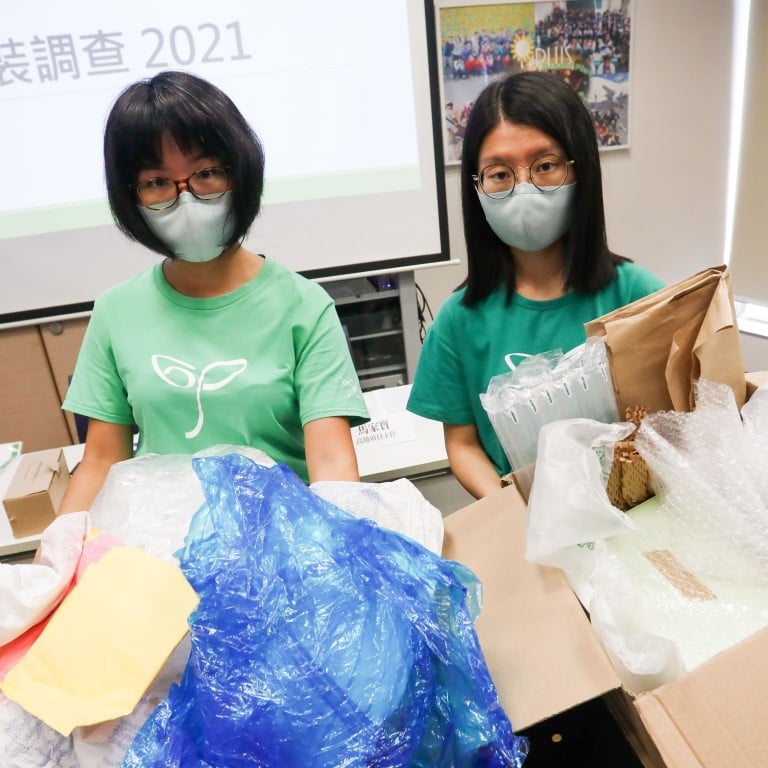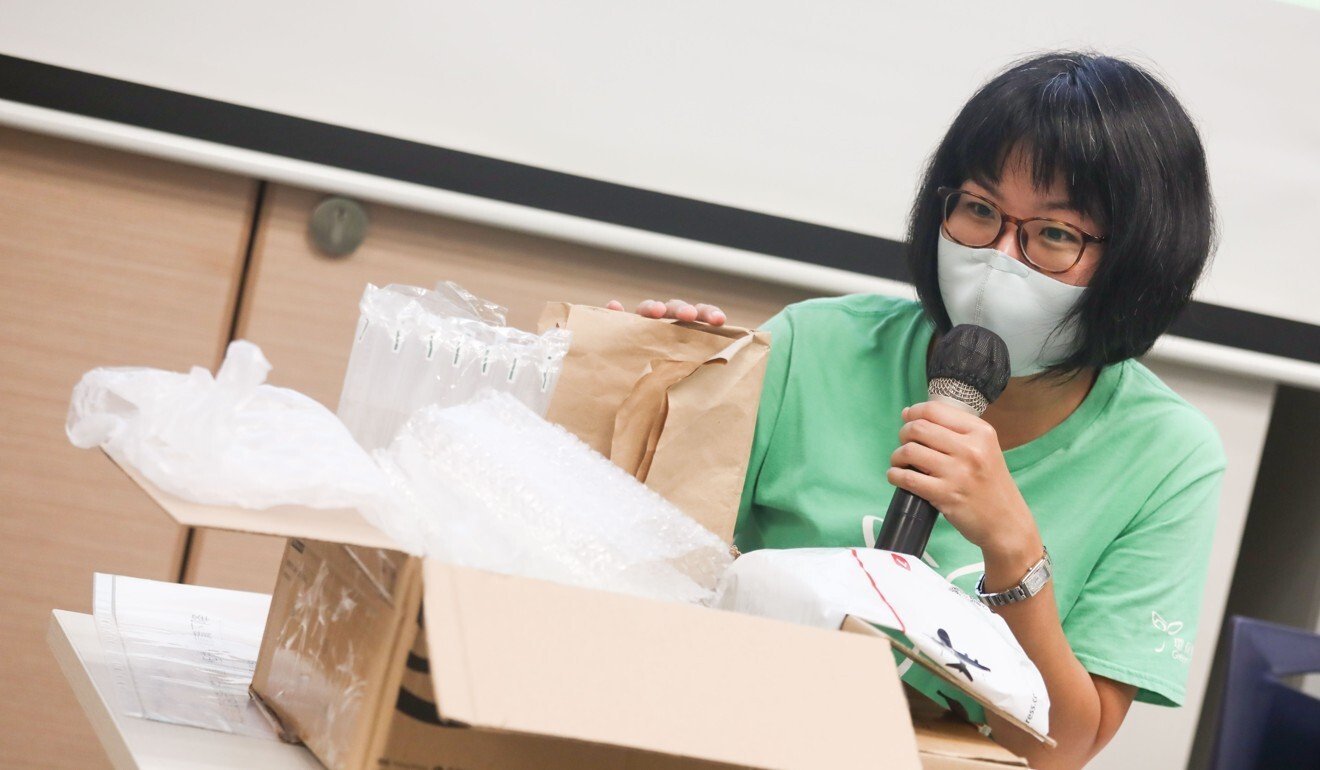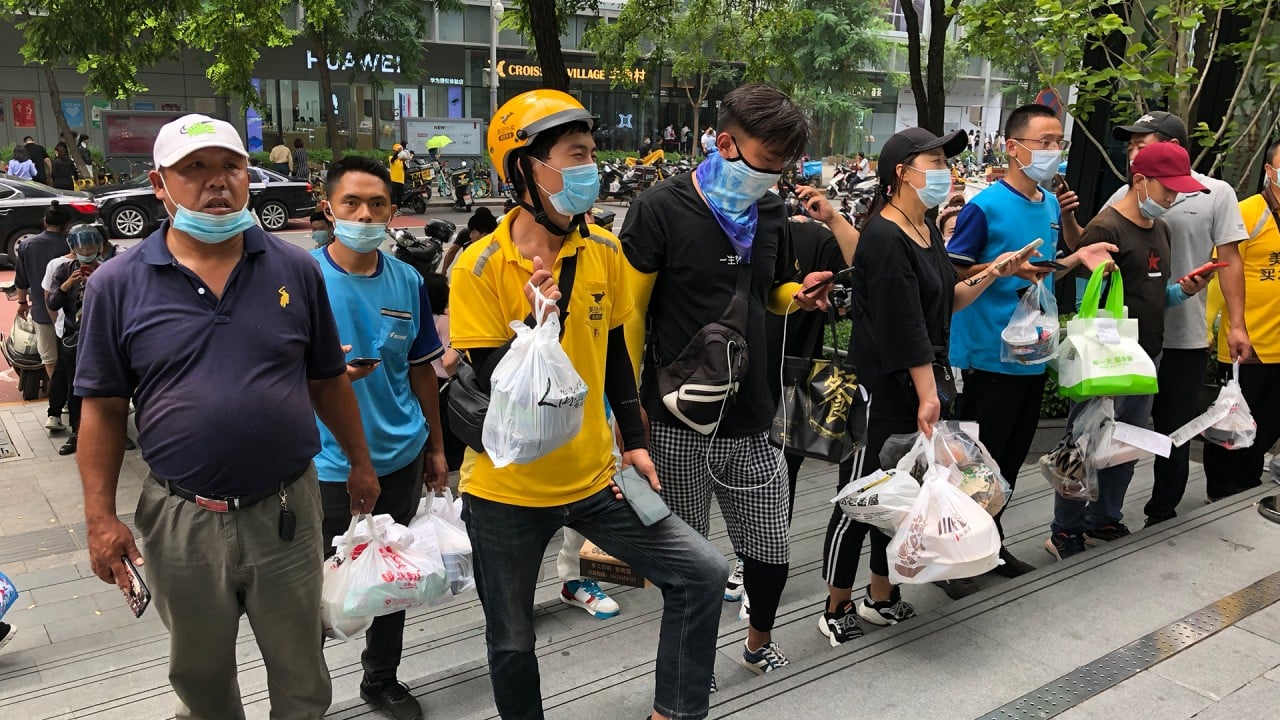
780 million pieces of plastic packaging used for Hong Kong online shopping orders in 2020; green group urges regulation of issue
- Local group Green Sense conducted checks at 10 parcel collection stations and found an average of 2.32 pieces of packaging were used for each product
- Only 35 per cent of respondents to a survey say unnecessary wrapping is an issue, 16 percentage points less than last year
Local group Green Sense found that an average of 2.32 pieces of packaging were used for each product, but just 35 per cent of respondents to a survey said unnecessary wrapping was an issue, 16 percentage points less than last year.
The group conducted packaging counts at 10 parcel collection stations operated by SF Express, one of the largest couriers in Hong Kong, 17 times in May and June this year. It also collected 209 online questionnaires on internet shopping habits and the use of packaging.

Official data showed 2,672,300 people used online shopping services in 2020, 20.3 per cent more than in 2018. Figures are not available for 2019. Based on the government figures, the group estimated about 780 million packaging pieces were used for such purchases last year.
The amount of online sales in the first half of 2021 surged 54.9 per cent compared with the same period last year, while customers racked up HK$2.3 billion (US$295.3 million) in online retail sales in June, a 63.8 per cent year-on-year increase.
The group’s study also found that on average 2.71 types of packing materials were used in each shopping order. Green Sense said the public might simply throw away most of the wrappings without knowing what to recycle.
In one case, nine materials were used on a parcel – a cardboard box, bubble wrap, delivery bag, plastic tape, honeycomb bubble wrap, polystyrene pellets, inflatable airbag, craft paper and newspaper.
Why are Hong Kong supermarkets wrapping pineapples in plastic?
“We noticed more people were shopping online after the pandemic, prompting us to begin the investigation last year,” Green Sense senior project officer Polly Ma Ka-po said on Wednesday.
But she warned that people were already “numb” about excessive packaging, citing one respondent who said “it is what it is and nothing can be done to change the situation”.
Senior project manager Gabrielle Ho Ka-po said delivery companies wrapped goods in such a way as to prevent damage but they might be too protective.
“We saw tape covering not only box openings, but also unnecessary spaces,” Ma said.

04:13
Pandemic food delivery boom creating vast amounts of plastic waste in China
The green group said online shops and delivery companies were both responsible for cutting wrapping, for example, by using boxes with zips and reusing packaging collected from customers.
They also suggested the government issue guidelines and enact laws to regulate packaging for online purchases, while the public could visit shops that implemented greener measures.
In response to a Post inquiry, HKTVmall, Hong Kong’s largest online retailer, said it used single plastic bags for products in the same category but would separate food, personal care and household cleaning products to avoid cross-contamination.
It said it had also been replacing carton boxes and paper bags with reusable plastic containers and used packing materials of different sizes to avoid oversized packaging as well as recycling and reusing waste generated by its fulfilment centres since 2017.
“We are in the process of sourcing eco-friendly packing materials, which would be biodegradable and reviewing our packing guidelines to our merchants,” its spokesman said. “The new measures are expected to be in place in the coming months.”
Shanghai tackles China’s massive e-commerce waste problem
SF Express said it had internal guidelines to ensure the safe delivery of shipments and reduce unnecessary packaging materials.
“The company has also progressively used recyclable packaging materials and switched to electronic waybills for all its shipments,” its spokesman said.
But Ma said the internal guidelines might not be useful. “We noticed that while there may be guidelines for staff, they may not be environmentally friendly. Staff may wrap products based on their own experiences instead of the guidelines,” she noted.
The Environmental Protection Department said it had been discussing with the retail sector and other stakeholders to explore and implement practical measures.
“We have also commissioned the Council for Sustainable Development to engage the public in the discussions on how to regulate disposable plastics, the scope, priorities and timeline,” it said, adding that preparation was under way and details would be announced in due course.

